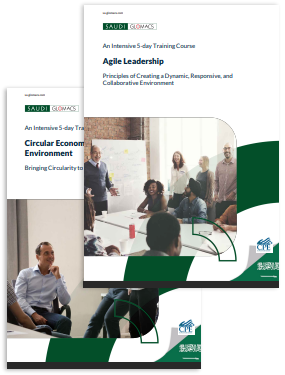An Interactive 5-Day Training Course
Advanced Financial Statements Analysis
Evaluation and Interpretation of Financial Position
and Performance
Course Overview
This interactive GLOMACS Advanced Financial Statements Analysis training course will update and develop your skills of analysing financial information, business activities, and the key risks faced in today’s uncertain economic, political, and physical global business environment. It will guide you through the key steps of analysing financial statements, evaluating new investments, and measuring the performance of your organisation. Throughout this course, the participants will be able to relate their learning to real-world issues and problems and develop their ability to generate growth and improve profitability, as well as pinpointing problem areas for remedial action and will have the opportunity to acquire financial skills and technical knowledge that will enable them to manage more effectively.
Financial statements – income statements, balance sheets, and statements of cash flows – are published annually by all organisations. But what do they mean? Are they telling us the truth? How do they enable us to manage our organisations more effectively and more profitably?
You may think your financial knowledge and know-how are adequate and up-to-date – but it probably is not!
It’s time to wake up and smell the coffee – financial awareness really is crucial for all non-financial managers as well as accountants and financial managers.
This GLOMACS training course will highlight:
- The value of the annual report and accounts and other sources of key financial information
- Use of a range of tools and techniques to analyse and evaluate financial position and financial performance
- Effective acquisition and use of financial resources
- Analysis and valuation of capital investment projects and businesses
- Analysis and management of a business and financial risk
Training Outline
DAY 1: Introduction to Advanced Financial Analysis
- Why analyse financial data?
- Who are the users of Financial Information?
- Sources of Financial Information
- Published Annual Reports and Accounts – What is their purpose?
- The Structure and Contents of an Annual Report and Accounts
- Creative Accounting, Financial Scandals, and the Agency Problem
- Corporate Governance, Sustainability, Ethics and Corporate and Social Responsibility (CSR) Reporting
- The Three Main Financial Statements
- Income Statement
- Balance Sheet
- Statement of Cash Flows
DAY 2: Analysing the Annual Report and Accounts
- Using Ratio and Other Analyses of the Annual Report and Accounts to Assess Financial Position and Financial Performance
- Profitability and Cost-Volume-Profit (CVP) Analysis
- Efficiency and Working Capital
- Liquidity and the Short-term Solvency
- Investment and Growth
- Financial Structure and Long-term Solvency
- Ratio Analysis using Excel
- Excel Trend Analysis using Common-size Horizontal Analysis and Vertical Analysis for Comparability
DAY 3: Analytical Tools, Cash vs. Profit and the Cash Forecast
- The Dupont System of Ratio Analysis and Pyramids of Ratios
- Segmental Analysis and Value Added Analysis of the Annual Report and Accounts
- The Fundamental Statistical Tools and Graphical Representations
- Using Statistical Techniques to Analyse and Forecast Financial Data
- The Impact of Alternative Asset Valuation Methods on the Balance Sheet and Profitability
- Cash flow vs. Profit – The Best Measure of Financial Performance
- Working Capital and the Cash Flow Operating Cycle
- Direct and Indirect Cash Flow Analysis and the Cash Flow Forecast
DAY 4: Financing the Business, Capital Investment Project and Business Valuation
- Analysis of the Balance Sheet to Identify Long-term Debt and Equity, and Short-term Financing
- Capital Cost Models: Cost of Equity using Dividend Growth and Capital Asset Pricing Model (CAPM); Cost of Debt
- Weighted Average Cost of Capital (WACC)
- Optimal Capital Structure Models to Minimise WACC
- Future Values, Present Values, and Discounted Cash Flow (DCF)
- Using Net Present Value (NPV), Internal Rate of Return (IRR), Modified Internal Rate of Return (MIRR) and Equivalent Annual Cost (EAC) to Analyse and Evaluate Capital Projects
- The Reasons for Business Valuations
- Business Valuation Models
DAY 5: Analysing and Predicting Corporate Failure, Business and Financial Risk
- Predicting Financial Distress and Corporate Failure – The Altman Z-score Model
- Risk and Uncertainty
- Risk Analysis using Expected Values, Standard Deviation and Coefficient of Variation
- Sensitivity, Simulation, Scenario and Break-even Analysis Techniques
- The Analytical Tools to Manage Risk
- Systematic Risk, Unsystematic Risk, Business Risk and Financial Risk
- Financial Risk– Interest Rate and Foreign Currency Exchange Rate Exposures
- Using Insurance, Hedging and Derivatives to Mitigate and Minimise risk
Certificates
- On successful completion of this training course, GLOMACS Certificate will be awarded to the delegates
- Continuing Professional Education credits (CPE) : In accordance with the standards of the National Registry of CPE Sponsor, one CPE credit is granted per 50 minutes of attendance
Accreditation

GLOMACS is registered with NASBA as a sponsor of Continuing Professional Education (CPE) on the National Registry of CPE Sponsors. NASBA have final authority on the acceptance of individual courses for CPE credit. Complaints regarding registered sponsors may be submitted to the National Registry of CPE Sponsors through its website: www.learningmarket.org.
All Training Seminars delivered by GLOMACS by default are eligible for CPE Credit.


About Saudi Glomacs
At Saudi GLOMACS, we specialize in delivering world-class training courses in Saudi Arabia and across various international locations. Our training courses are tailored to meet the unique demands of Saudi Vision 2030 and the Human Capability Development Program, focusing on empowering Saudi citizens and enhancing workforce skills. We offer diverse courses spanning leadership, management, engineering, and technical disciplines to cultivate expertise and drive professional growth. Our flexible learning options—whether in-person, online, or in-house—ensure accessibility and convenience for individuals and organizations alike.
With over 30+ years of experience through the GLOMACS global network, we are committed to delivering innovative, results-driven training solutions. Our expert instructors combine industry knowledge with dynamic teaching methods, fostering practical skill development and long-term career success. By choosing Saudi GLOMACS, you're investing in personal excellence and contributing to the Kingdom’s sustainable economic growth and vision-driven transformation.
What do you need to learn next?
Check our list of courses or let us customize a course for you.
View courses



